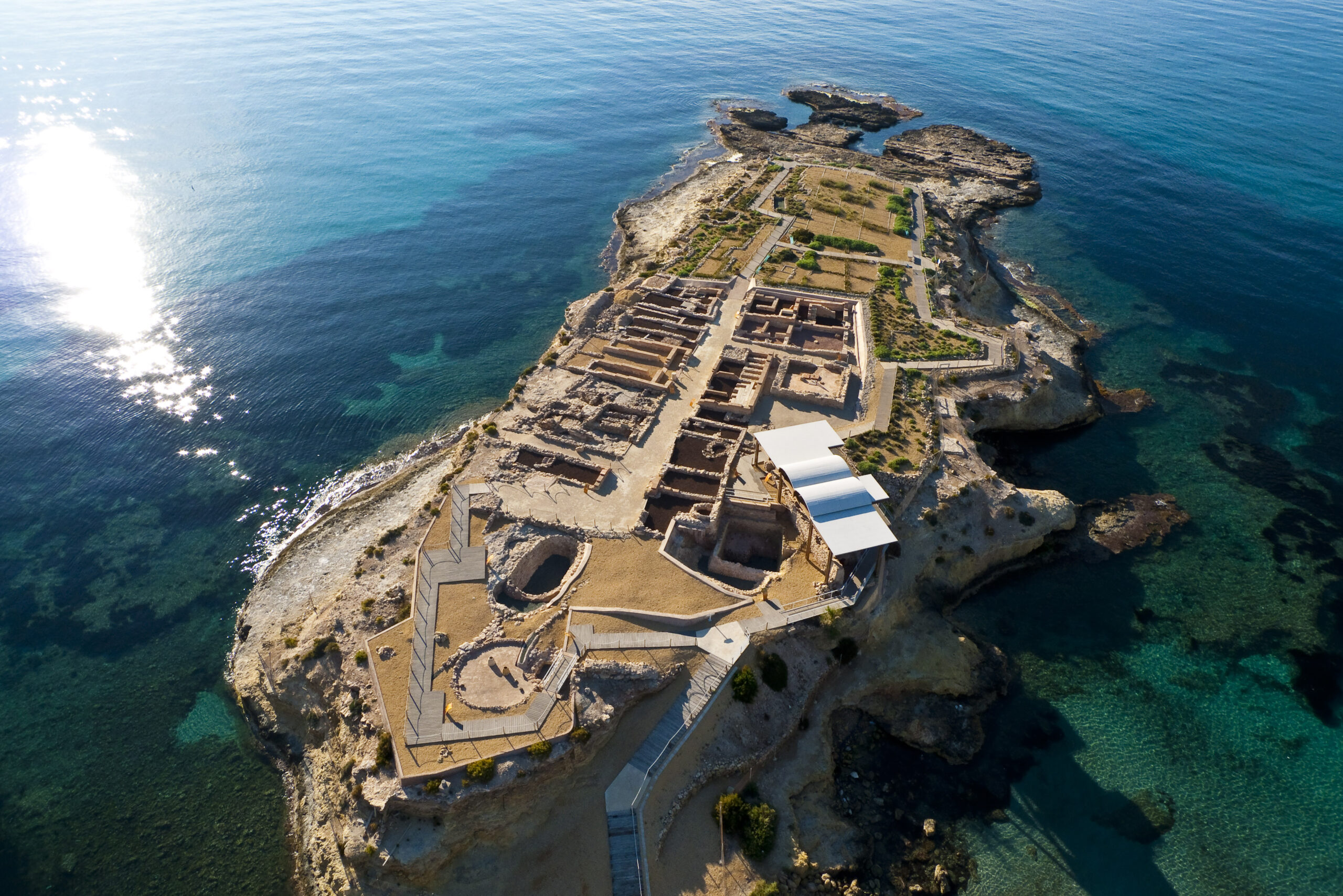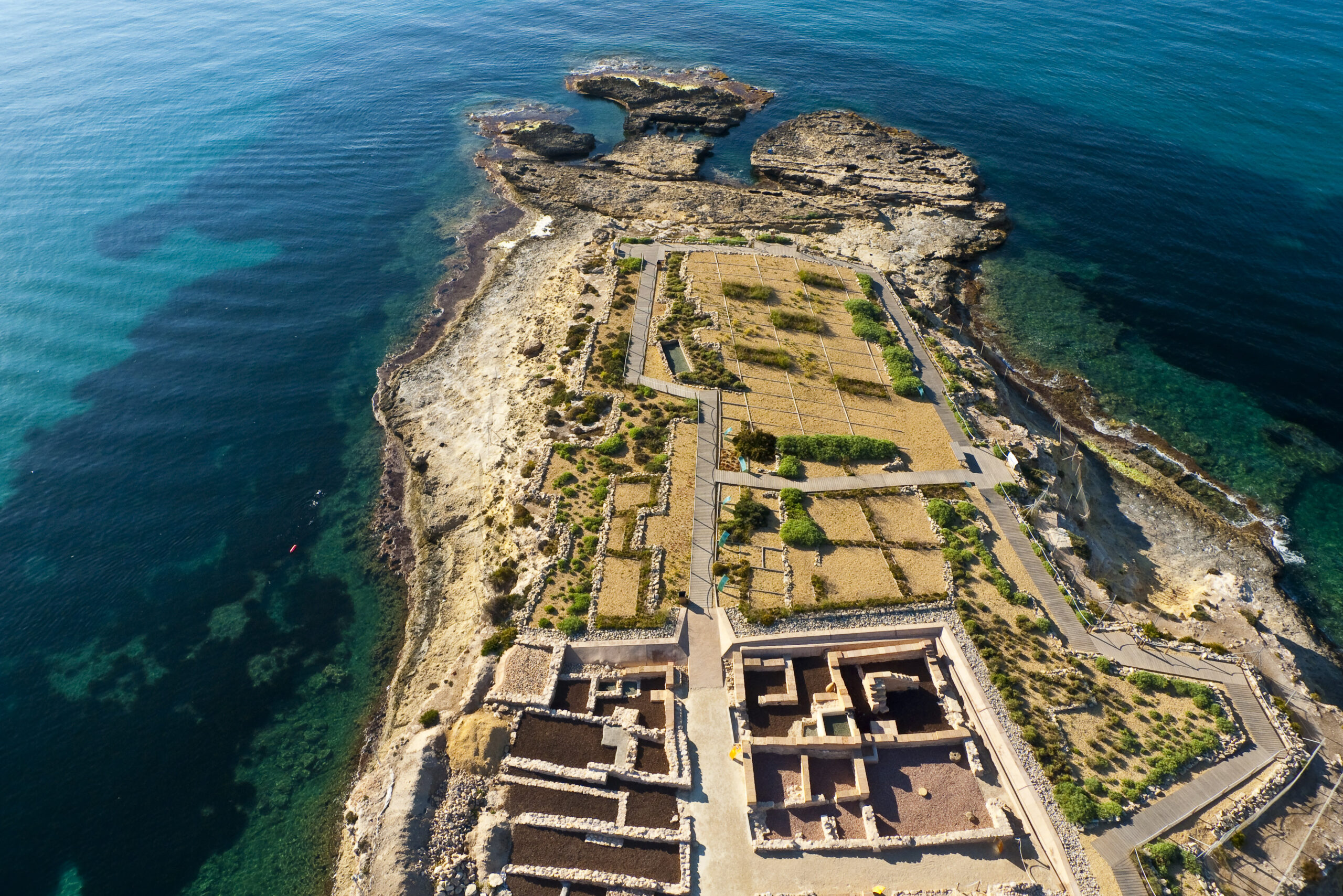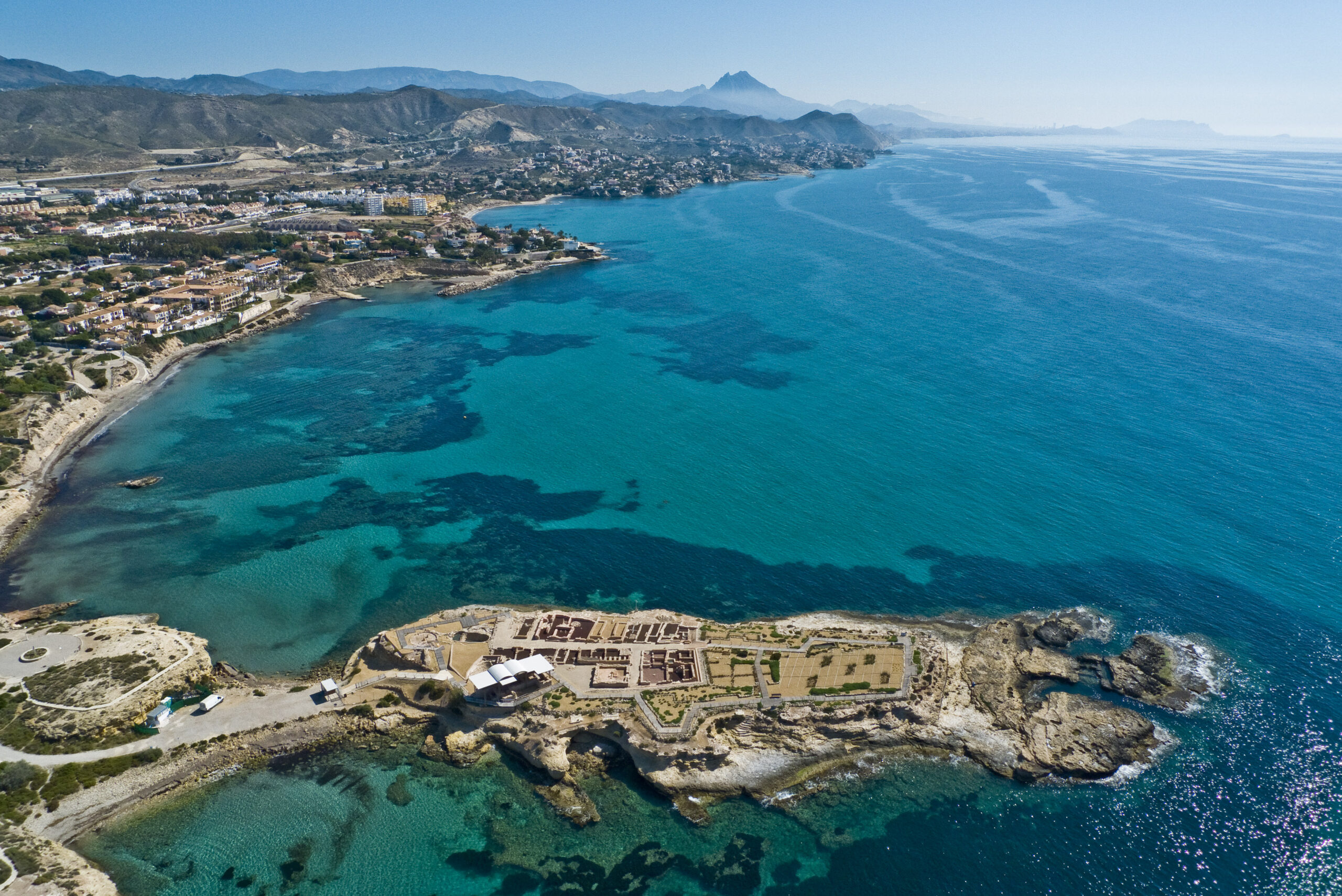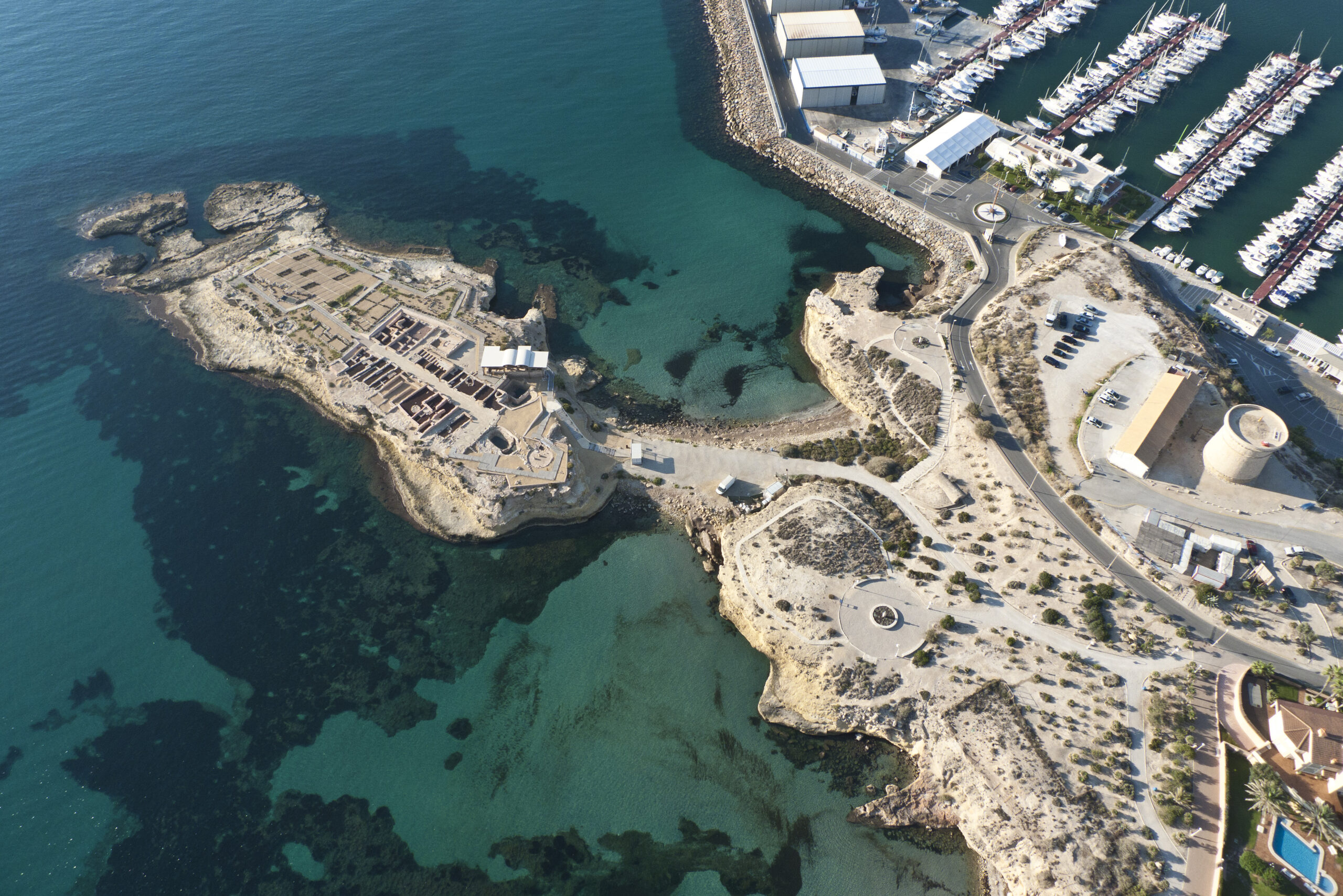ILLETA
The Illeta dels Banyets is one of the longest known and excavated archaeological sites in Alicante.
It is located in the municipality of Campello, about 9 km from the city of Alicante. It is an ancient peninsula that was separated from the coast due to an earthquake, at an uncertain date, in which the part that joined it to the land was destroyed and eroded. In 1943 it was reattached to land to form a natural breakwater, using dynamite and destroying a large part of the prehistoric necropolis.

Currently, the Illeta dels Banyets is a long, narrow promontory with a surface area of 10,000 m², of which approximately 4,000 m² make up the archaeological site, with its highest point at 7.8 m above sea level. It is currently undergoing a period of consolidation of the constructive structures found in the excavations and museumisation so that it can be visited.
Despite its small size, this site is of great importance due to its broad cultural sequence, as remains from the Bronze Age have been identified here, prior to those that make up an Iberian settlement and those that remain of a Roman villa, as well as the presence of Islamic materials that tell us of a sporadic occupation in the Medieval Period. All of this shows that the Illeta dels Banyets was an important commercial port, from which both the sea routes and those leading inland were dominated.


The first evidence of occupation dates back to prehistoric times and more specifically to the Eneolithic period, when the inhabitants lived in oval-shaped huts of which some remains have survived. Later, in the Bronze Age, two large cisterns were built, partially excavated in the rock, around which burials and living structures have been found. Metal awls and daggers, bracelets, ivory knobs and buttons, and some ceramic vessels have been found in the tombs.
The next level corresponds to the Iberian Period, from the 4th and part of the 3rd century BC, a period in which an important settlement developed, only part of which has been excavated. Two temples, warehouses and dwellings, some of which are of great architectural complexity, can be seen on either side of a street running the length of the island. This nucleus, given the singularity of the buildings and the richness and variety of the buildings found, can be interpreted as an emporium, an important place of commercial exchange. On the mainland, next to the modern tower, a pottery for the manufacture of Iberian amphorae has been discovered, from which several kilns have been excavated.
The highest level corresponds to the Roman period, between the 1st and 2nd centuries AD. A Roman villa was built on the foundations of the abandoned Iberian settlement, with a small baths attached to it. Very little remains, although it is possible to clearly distinguish the area of the owner's residence (pars urbana) and another area related to agricultural activities (pars rustica). A very simple thermal building has also been found in a narrow nave in which the furnace, the hot room, the tepidarium and the frigidarium-apodyterium are lined up. The remains of some rafts carved into the rock and connected to the sea by means of trapdoors, corresponding to fish hatcheries, also date from this period.
One of the most important activities in this part of the Roman Empire was the exploitation of the resources of the sea and more specifically the preservation of fish and fish farming. Several fish preservation factories are known in the province, the most important being the one at Portus Ilicitanus.
The nurseries preserved at La Illeta dels Banyets are very eroded by the action of the sea. They are made up of four interconnected basins. The largest of them all, measuring 8.7 by 3.10 metres, receives seawater through two channels located at both ends, while the other three, smaller ones are aligned perpendicularly to the largest. The communication between them is made by means of vertical grooves carved into the rock, which in turn served to facilitate the opening and closing of the gates.
Despite its small size, this site is of great importance due to its broad cultural sequence, as remains from the Bronze Age have been identified here, prior to those that make up an Iberian settlement and those that remain of a Roman villa, as well as the presence of Islamic materials that tell us of a sporadic occupation in the Medieval Period. All of this shows that the Illeta dels Banyets was an important commercial port, from which both the sea routes and those leading inland were dominated.


ILLETA DELS BANYETS
The Illeta dels Banyets is one of the longest known and excavated archaeological sites in Alicante. It is located in the municipality of Campello, in the...
OPENING TIMES
FROM TUESDAY TO SATURDAY
From 10:00 a.m. to 2:00 p.m.
From 15:30 h to 17:30 h
SUNDAYS AND PUBLIC HOLIDAYS
From 10:00 to 14:00 H
MONDAY CLOSED
FROM TUESDAY TO FRIDAY: 12:00h
SATURDAYS: 12:00h and 16:00h
SUNDAY: 12:00h
> Wear comfortable shoes and a cap/hat.
> It is suggested to bring a bottle of water and sun protection.
TICKET SALES
